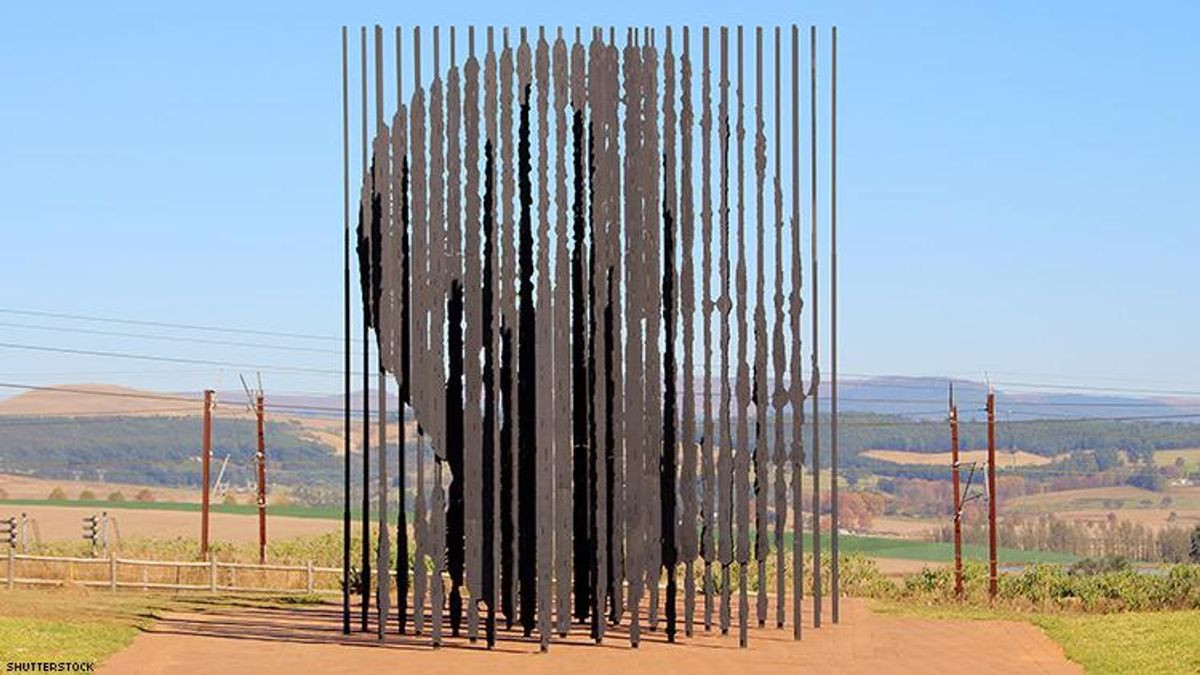Stigma
HIV Rates Drop in South Africa, Coinciding with Mandela's Centenary

New HIV transmission rates are down in the African country, but does it make up for Madiba's early missteps?
August 08 2018 6:20 AM EST
November 04 2024 9:31 AM EST
By continuing to use our site, you agree to our Private Policy and Terms of Use.

New HIV transmission rates are down in the African country, but does it make up for Madiba's early missteps?
New evidence suggests a sharp decline in new HIV diagnoses in South Africa. It’s a nation that historically is disproportionately burdened with HIV. With the “largest HIV epidemic in the world,” South Africa harbors one-fifth of the global number of people living with HIV, but positive changes are underway.
Led by the Human Sciences Research Council, a South Africa-based investigational team, a national survey revealed that the number of new HIV diagnoses had dropped by 44 percent since data was last collected in 2012.
“HIV Prevalence, Incidence, Behaviour and Communication Survey for 2017” was released in Pretoria, South Africa on July 17. “New HIV infections have significantly declined over the past five years, with the HIV incidence rate of 0.48 percent observed in 2017 compared to the 2012 infection rate of 0.85 percent,” the organization reported.
The study also found that viral suppression was achieved 87.3 percent of the time among people living with HIV who were on antiretroviral treatment. Females were generally more likely to have be virally suppressed, but there was a sharp rise in HIV prevalence in women 60 years and older. Overall, however, the findings suggest improvements in new HIV cases.
Higher numbers of South Africans living with HIV, as indicated in the report, is actually good news. That just means less people are dying AIDS. The number of South Africans living with HIV fell from 2.2 percent of the population in 2012 to 14 percent in the latest data.
But the people at UNAIDS aren’t celebrating just yet.
Even with progress in South Africa, the bigger picture isn’t as rosy. “The success in saving lives has not been matched with equal success in reducing new HIV infections,” Executive Director of UNAIDS Michel Sidibé toldThe Telegraph when being asked about HIV in South Africa. “New HIV infections are not falling fast enough.”
A report released by UNAIDS on July 18 describes a sobering scenario. UNAIDS found that global new HIV cases have declined by 18 percent in the past seven years, down from 2.2 million in 2010 to 1.8 million in 2017, but it’s still not enough.That because new transmission rates are still on the rise in about 50 countries worldwide. Sidibé agrees that reductions in new HIV cases have played out the best in eastern and southern Africa, but other areas like western Africa are still struggling. Even with the drop in new cases, South Africa is unlikely to meet UNAIDS’ global target goal to reach fewer than 500,000 new HIV infections a year by 2020.
“We are sounding the alarm,” stated Sidibé. “Entire regions are falling behind, the huge gains we made for children are not being sustained, women are still most affected, resources are still not matching political commitments and key populations continue to be ignored. All these elements are halting progress and urgently need to be addressed head-on.”
The ongoing HIV epidemic in South Africa is overshadowed by Madiba’s centenary, marking the 100th anniversary of Nelson Mandela’s birth. Mandela is highly respected in South Africa, and often dubbed Madiba or called “Father of the Nation.”
Many have criticized Mandela for not doing enough to address the epidemic when he serve as president from 1994 to 1999 after having been imprisoned for nearly 27 years.
When Mandela’s son Makgatho died of AIDS in 2005 he had an awakening and realized he'd made a mistake in not addressing HIV earlier. He said in 2011 that "AIDS is no longer just a disease, it is a human rights issue." and, "history will surely judge us harshly if we do not respond with all the energy and resources that we can bring to bear in the fight against HIV/AIDS."
South African writer Rehana Rossouw, whose recent novel New Times is set in the heady, early days of Mandela's presidency, says "Mandela apologized for his poor response to HIV/AIDS and we loved him so much that at the time we were prepared to overlook all his shortcomings. But he made up for that, and did far more to combat the disease than his wacky AIDS denialist Thabo Mbeki successor did!"
Photo above: A memorial to Nelson Mandela at the site where the activist was captured in 1962. The sculpture was created by Marco Cianfanelli using steel beams.